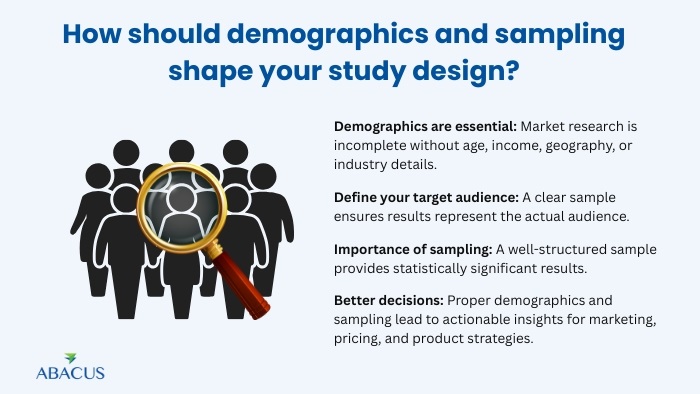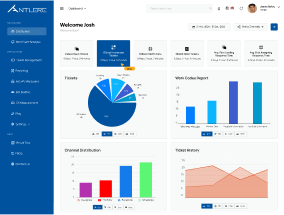Market Research Methods: What Questions Should Guide Your Strategy?
All successful business decisions begin with knowledge, which is precisely where market research methods come into play. Although market research is the general process of obtaining information concerning the customers, competition and markets, the techniques are the practical instruments to collect and analyze information.
The selection of the appropriate approach also makes sure that decisions are not made by guesses but rather on the basis of evidence and help companies minimize the risk and find actual opportunities to grow.
What is meant by “market research methods,” and how do they differ from market research itself?
Market research and market research methods are to be differentiated. Market research is a general term that denotes the process of gathering, analysis and application of observations regarding the market.
On the other hand, the specific techniques applicable are market research methods, that is, survey, interview, focus group, secondary desk research, or statistical analysis.
Concisely, what is research, whereas how is methods. Research is ambiguous, unreliable and inconsistent without the appropriate techniques.
Why does a method-first approach deliver more reliable Analysis?
Thinking in terms of methods in approaching market research produces structured and reliable results. A distinct methodology enhances the sampling, minimizes bias, and the analysis becomes much more precise.
Businesses do not have to operate on hunches or assumptions; they are able to collect actual evidence on market behavior.

What are the four methods of market research?
There are four widely recognized categories of market research methods, each serving a different purpose:
- Primary research: New data obtained in the target market. This covers surveys, interviews and observation studies.
- Secondary research: This is the information obtained through the information that already exists like governmental reports, industry research or published white papers.
- Qualitative research: Open-ended, inquiry research that divulges customer motivations, opinions and attitudes.
- Quantitative research: Data that is measurable, numerical and can be applied to predict trends and justify a decision through a structured analysis. While each method has its strengths, the most effective strategies often combine two or more, creating a balance of depth and accuracy.
How do primary and secondary methods work together in a thorough plan?
Both Primary and secondary research complement each other. Secondary research will serve to frame your hypotheses and source of context- it can give you competitor benchmarks, market sizing estimates or consumer spending patterns. Primary research thereafter confirms such notions by visiting your customers.
Combined, these approaches conserve time and money and make sure that you are testing assumptions with real-world data. As an illustration, you can use the secondary sources to learn about market size and then primary surveys to gauge the level of resonance that your product has to certain demographics.
What are the best techniques inside qualitative and quantitative methods?
Within qualitative and quantitative research, different techniques allow you to tailor your study to your goals.
- Qualitative techniques: These are interviews, focus groups, and diaries. These assist in discovering the reason of customer behavior and emotions that cannot be justified only by numbers.
- Quantitative methods: These are surveys, polls, experimentation, tracking behavior. They can be measured to give insights that can be deployed in large-scale fashion and give statistical confidence by means of rigorous analysis.
By combining both approaches, businesses can capture a complete picture: what customers are doing, and why they are doing it.
How should demographics and sampling shape your study design?
Without proper demographics, then no market research is complete. Whether it is age, income, geography, or industrial definition, defining your sample and making sure your results represent your actual target audience.
In the absence of appropriate demographic targeting, studies may become biased or meaningless.
Sampling also plays a key role. A well-structured sample guarantees that findings are statistically significant and can be segmented into meaningful insights—helping you make better marketing, pricing, and product decisions.

What are the 5 P’s of market research?
To simplify planning, the 5 P’s of market research provide a clear framework:
- Purpose: Define the goal of your study.
- People: Select the right sample and stakeholders.
- Process: Choose the appropriate market research methods.
- Probe: Craft effective and unbiased questions.
- Proof: Validate results with reliable analysis.
Which tools and platforms make execution practical today?
Modern tools have made conducting research faster, more efficient, and more accurate. From survey platforms and online panels to transcription services, social listening software, and statistical modeling platforms, technology supports every stage of the research process.
For instance, advanced platforms can help streamline analysis by automatically coding responses, visualizing data, and even detecting sentiment. This makes it easier to connect findings directly to business strategies.
Benefits of conducting market research
Investing in market research methods delivers measurable benefits for organizations of all sizes:
- Better customer insights: Discover the way individuals think, act and make decisions.
- Less risk: Strategize before making high investments on new products or campaigns.
- Competitive edge: Competitor benchmarking and identifying opportunity using good sources.
- Enhanced targeting: Apply demographics to segment your audience and personalize marketing.
- Higher ROI: Direct budgets toward strategies proven to work through solid data and analysis.
The businesses that conduct research consistently are those that adapt faster, innovate smarter, and build stronger customer relationships.
How do you turn insights into decisions and ROI?
Data alone is not enough. The market research is the real value when it is acted upon. When these are gathered, the results are to be converted into actual action-based decisions, e.g., product enhancement, specific campaigns, or a price change, and quantified against business KPIs.
When the correct cycle of collection, analysis and application is used, market research can be an engine of profitability, and not just an exercise in academia. Good application of the market research techniques transforms doubt to faith.
Primary and secondary studies, qualitative and quantitative methods, and clearly identified demographics allow companies to switch qualitative and quantitative guesses to evidence-based decision making.
At Abacus BPO, we help organizations apply the right research strategies with precision and scale. By transforming raw data into clear actions, we empower businesses to unlock growth, reduce risk, and create lasting customer value.









